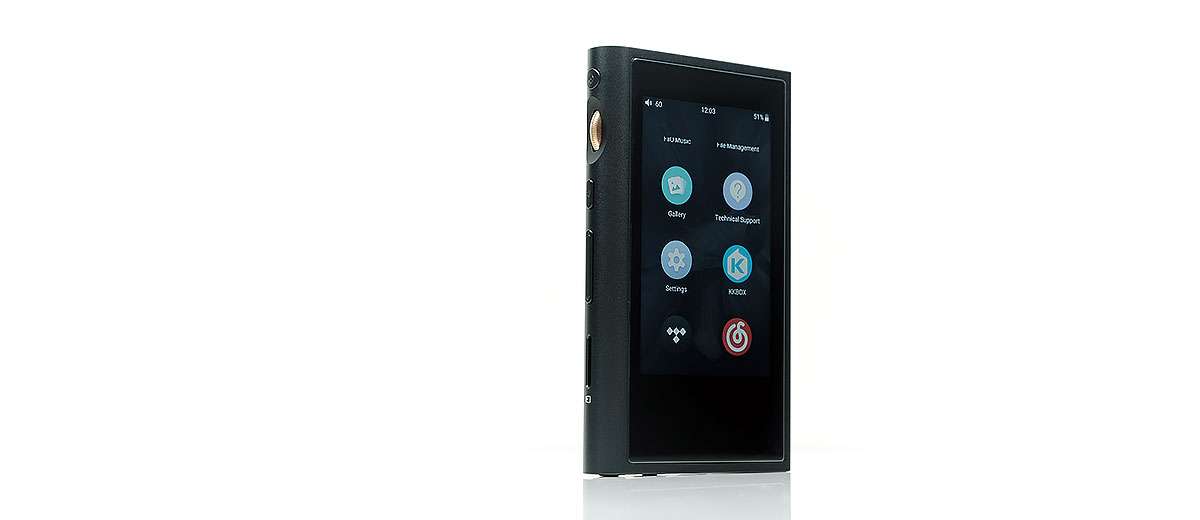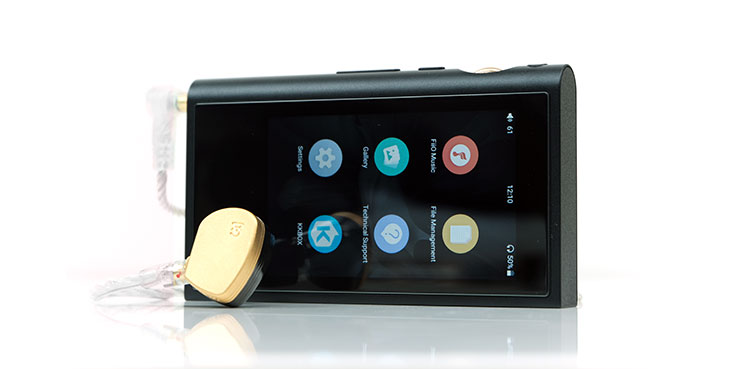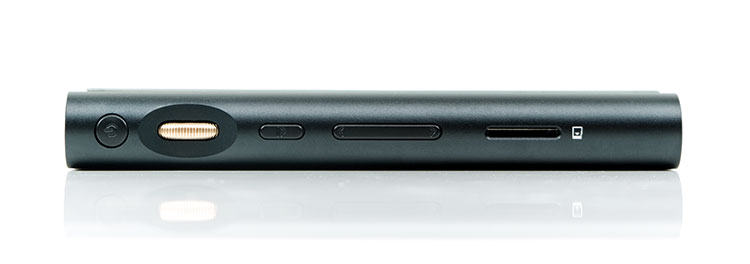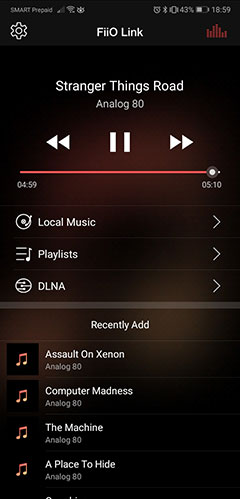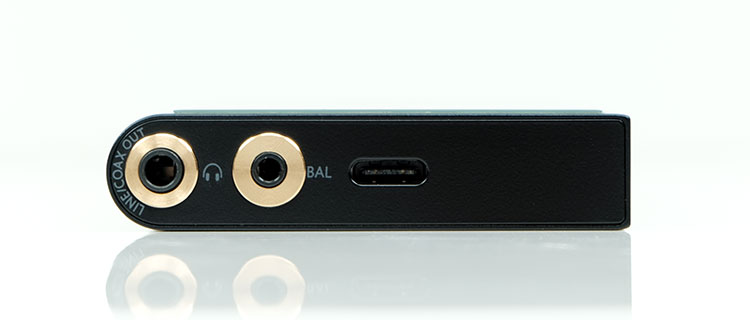The FiiO M9 is the latest in the company’s new M series of digital media players featuring Android and Bluetooth LDAC capability. It is priced at $299.99
Disclaimer: The FiiO M9 sent to us is a sample in exchange for our honest opinion. We thank FiiO for this opportunity.
To learn more about FiiO reviews on Headfonics you can click here.
FiiO has been pushing their M-series DAP really hard and fast of late with no less than 3 in the space of about 6-7 months including the M3K, M6, and the M7 which all have been reviewed by our team here at Headfonics.
Logically then, the M9 is the next step in the media player ladder for FiiO.
I was lucky enough to get a quick “poke and a play’ at the Hong Kong AV Show last August where it made its debut. It was already clear by then that FiiO was embarking on a radical overhaul of their DAP positioning.
Up to the M7, you could argue that the new M series took on a more of a consumer or lifestyle influence than the older X-series pure audiophile stance.
However, the M9, with the re-introduction of a balanced output and dual DAC implementation blurs the lines considerably between both camps.
There is no direct comparison between the M9 and any equivalent X-Series DAP apart from the price at $299. This is now an entirely distinct and modern DAP line-up from FiiO.
Technology Featured
In a way, the M9 is a clever blend of everything that is happening right now in their product development plus a few legacy features from the older X-Series.
Quite a lot of the key technology features in the M7 have been retained in the M9 such as BT LDAC, USB-C, and the new FiiO player app. The processor also remains unchanged with the efficient Samsung Exynos 7270 at the heart of the M9.
Subtle features from their recent BT dongle series have been integrated into the M9 also such as the BTR3’s color coding LED for the file quality rate during playback. Legacy features such as the Infinity Series theme of 2017 also makes a (welcome) comeback with the return of both balanced and unbalanced analog outputs.
Eagle-eyed readers will also have noted the return of the X5iii’s dual DAC implementation AK4990EN as well as coaxial output support found on both the X5iii and the X3iii. This places the M9 on par with the older X-series X5iii ‘s decoding capabilities and higher than the X3iii’s DSD64 limit.
Design
Form Factor
With the M9, FiiO has kept the emphasis on compact and small. In fact, it is a touch shorter than the M7 by 8mm. It is, however, a little wider with both almost the same depth. The weight is still quite light at 133g, just 17g more than the M7.
The key design difference between the two is the M9’s rounded left-side panel where all the controls and memory card slot is housed. It makes for a smoother feel in your hand compared to the boxier and pointier M7. The right side is finished in the same manner as the M7 so it has a much sharper feel to its cornering so sorry to all the those who like to hold their DAPs in your right hand.
Materials & Finishing
The finishing comes in two tones, silver, and black and the materials are al aluminum for the housing. The aesthetic is accented with the gold plating rings of the output jacks and matching color of the rotary dial on the top left panel.
I actually prefer the black finish over the silver. Compared to the silver M7 it looks a lot more integrated and sleeker. The thicker bezel on the screen is also less noticeable than on the silver version which enhanced the perception of the screen size.
The white labeling is quite minimalistic and printed rather than etched into the M9’s body. Time will tell if it stays fresh or fades over repeated usage. The button icons are raised bumps rather than flat labels so they will not fade and should be easy to figure out through touch only.
Screen
The M9 capacitive LCD screen is the same size as the M7 at 3.2″ and the same pixel resolution at 292ppi. However, it is a better quality LG IPS screen rather than the TFT version used on the M7.full brightness the new screen is slightly superior although the gap is not huge.
The viewing angle is decent at mild angles but not requite as legible from more extreme angles. The HiBy R3, for example, can be read almost horizontal at the eye-line due to the excellent 2.5D glass. The M9 takes a more traditional flat glass build approach and is thus a bit deeper into the housing making the viewing angle more restrictive.
What I did notice was a slightly bluish tone on the white background of the M7 and a subtle sepia-like hue on the M9. I found the M9 to be a bit easier to read for my tired strained eyes at times with that type of toning. The lighting also seems quite strong compared to the color depth thus saturation levels are a touch light to my eyes, especially at full brightness.
The main concern is the size with that large bezel around it. Granted the bottom has to make way for the new LED light coding system but since it is capacitive or touch-based it can make typing a very ‘studied process’. Apart from that, the response rate and accuracy of the screen seems quite good.
Controls
The control system, much like any other touch-based wireless DAP, falls into 3 areas; physical, touch and remote.
Physical
The physical buttons are all neatly aligned on the curved left panel. Here you will find the power, the volume rotary dial, playback, and volume rocker controls. You have some ability to control their functionality from the OS using a key-lock setting menu to define which ones will remain out of use when the screen is off.
The memory card slot is an open slot on the bottom of the left panel. The LED-infused power button of the M7 is now replaced with a more basic black power button since the LED system is now on the front display of the M9.
Given the size of the DAP they are a little on the tight side and relatively small or thin. They do have some raised icons to help you use it unsighted though the volume rocker raised bumps are a little too subtle for me to orientate quickly. On the plus side thumb movement on the left hand can reach pretty much all of the control without much physical effort which does enhance their physical usability in one hand.
The volume rotary dial has 120 ‘clicky’ steps that I presume are in 0.5dB incremental. It is a bit noisy when adjusting but it is quite accurate with no unexpected skips and a good low volume channel balance. It is also very quiet and smoothly boosts or attenuates the signal without any annoying jumps or crackles.
Touch
The touchscreen will pretty much let you do anything in terms of navigation and playback controls except initiate volume control. Unlike the M7, FiiO has brought back the classic Android drop-down menu on the M9 so no more swiping up from the bottom of the screen as part of the M9 control process.
Once the volume control is initiated through the physical dial you can still adjust it up or down with the screen volume overlay. I found it quite smooth when using the touch volume control and not at all jerky or fiddly. The physical dial is the more accurate of the two for micro-control however so I tend to use that more.
Remote
On the software side, you can control the M9 remotely though bi-directional Bluetooth. FiiO has also enhanced their Player app with a new feature called FiiO Link which works much in the same was as HiByLink with a server/client option to link another source with the app to the M9 and vice versa.
By setting up the M9 as a Server and the Smartphone as a client you can effectively control the M9 remotely (Bluetooth connection is automatically done during the setup process). This is ideal for those who have their hands constantly on their smartphones but want to control the M9 from a short distance on their desk or in their pocket if on the go.
Inputs & Outputs
There a couple of upgrades here on the M7. The first, and the most obvious is the addition of a 2.5mm balanced output on the base of the player right beside the unbalanced 3.5mm jack.
You may be asking why not 4.4mm? Well, cost and amp setup is one factor and the M9 dimensions the other. A 4.4mm stage would substantially add to the costs of production and push up the price of the M9. It would also increase the thickness or size of the M9.
The 3.5mm port also 3 levels of functionality though no labeling which is unusual. This includes LO/PO switching from the 3.5mm socket (no LO label) as well as a SPDIF output (coaxial).
To the right side and more central is the now ubiquitous USB-C connection for data charging, OTG or digital audio and for setting up as a USB-DAC.
Battery Life
The M9 uses a 2350mAh Li-polymer battery which is a bit bigger than the 1800mAh size of the M7 battery. Battery life is, however, down from the M7 at 10 hours for unbalanced and 9 hours for balanced. This brings it into the general average performance category.
The Samsung Exynos 7270 battery life advantage has been rendered a little moot by that heavy increase in power specifications and the dual DAC implementation on the M9. Going from 40mW on the M7 to up to 220mW in a 32Ω load with a Turbo option will drain on the battery a lot more. Add to that the ability to go wireless and it will start eating into whatever is left even more.
Our regular usage got close enough to the rated spec but dropped the higher the codec we used and the more we resorted to bright screen settings and wireless DLNA usage.
Fast charging has been improved on the M9 by up to 30 mins compared to the M7, however. You can now charge the M9 in around 2 hours compared to 2.5 hours with a DC5V/2A supply. You also get a massive 45 days sleep time which is substantially larger on the old X-series such as the X1 II at just 15 days.
Storage Options
The M9 will not offer best in class memory storage with a single micro-SD slot and just 2GB of onboard memory which was the same as the M7. Officially, it is stated up to 2GB (in theory) storage capability on that micro-SD slot so there should not be an issue managing large media libraries from external memory sources. We tested 128GB Class 10 without any hassles.
The onboard 2GB? Well, better than nothing and certainly better than the X3iii, Shanling M2s/M3s so ‘glass half empty’ or ‘glass half-full’, take your pick.
Unlike the M7 you do have WiFi so you can stream from the likes of TIDAL which is pre-installed and a white list of other sources (see Page 2in our software run down). You can also set up a DLNA connection on your local network and stream to your hearts content there as well as BT FiiO Link for other sources using the FiiO app. So you do have indirect means to expand your storage options on the M9.
Accessories & Packaging
The packaging on the M9 is a little on the basic side and not much of an upgrade on the M7. This is in their white and black consumer-level packaging similar to the M7. It does the job but it is slightly cheaper in materials and layout.
Inside you get a fairly spartan set of accessories that include a USB-C cable for charging and USB-DAC functionality with your PC or Mac as well as a silicone gel case. You also get a coaxial short cable converter, set of manuals, quick start guide, and warranty documents.
A screen protector is pre-applied on the M9 which you simply peel off. The silicone case will do the job of protecting you from the sharp cornering and also from knocks and bumps but it is no looker, to be honest.
There does seem to be some optional accessories you can buy from FiiO including a rather nice leather fitted-case. I recommend you grab that case if you can and give your M7 something that looks good.
Click On Page 2 below for Hardware & Software Impressions

